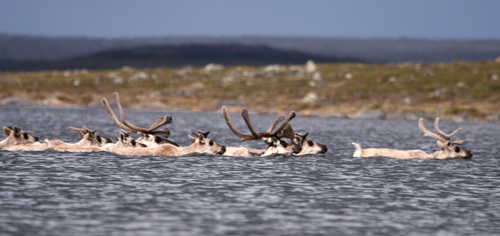Paddlers Oppose Tundra Uranium Mine
23 Feb
A veritable who’s who of Far North canoeists have expressed official opposition to a proposed uranium mine on Nunavut’s Back River on the Canadian tundra.
Che-Mun, a Canadian wilderness canoeing journal, reprinted comments made to the Nunavut Impact Review Board by tundra river guide Alex Hall, Canadian Canoe Museum curator James Raffan, filmaker Robert Perkins, and 1962 Back River descender John Lentz in reporting the story in its latest issue.
The Uravan Minerals project near Garry Lake, opponents say, will further stress the faltering Beverly Caribou Herd which appears to have suffered a catastrophic decline in recent years. The herd, which roams between the forests south and east of Great Slave Lake to the tundra northwest of Baker Lake, numbered 276,000 animals in the early 1990s but is now feared to have declined as much as 98% based on recent aerial surveys.

(There’s a map of the Beverly and Qamanirjuaq herds’ ranges HERE.)
Uravan’s project would be located in close proximity to the Beverly herd’s traditional calving grounds. Canadian Canoe Museum curator James Raffan, who noted that caribou herd declines corresponds with an increase in mineral exploration on the tundra, is quoted by Che-Mun saying: “The proposal before the NIRB at present is bound to set a precident. It is essential that the NIRB send a clear signal to industry that mineral developemnt on the calving and post-calving grounds is out of the question.”
A Uravan company statement of principles said: “Uravan believes it is important to preserve the environment; to include water, flora and fauna, and importantly, the caribou herds. Uravan is committed to working with the Inuit people and Inuit organizations to identify and resolving specific areas of concern in a mutually beneficial way.”










